
Coös County, frequently spelled Coos County, is a county in the U.S. state of New Hampshire. As of the 2020 census, the population was 31,268, making it the least-populated county in the state. The county seat is Lancaster.
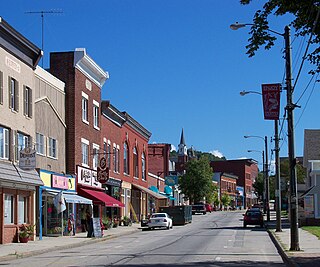
Berlin is a city along the Androscoggin River in Coös County in northern New Hampshire, United States. It is the northernmost city in New Hampshire and the only city in Coös County. The population was 9,425 at the 2020 census, down from 10,051 at the 2010 census.

Colebrook is a town in Coös County, New Hampshire, United States. The population was 2,084 at the time of the 2020 census, down from 2,301 at the 2010 census. Situated in the Great North Woods Region, it is bounded on the west by the Connecticut River and home to Beaver Brook Falls Natural Area.

Dummer is a town in Coös County, New Hampshire, United States. The population was 306 at the 2020 census. It is part of the Berlin, NH–VT micropolitan statistical area. Dummer is home to the Pontook Reservoir, popular with canoeists, kayakers and birdwatchers. In the western part of Dummer lies the village of Paris.

Groveton is a census-designated place (CDP) and the primary village in the town of Northumberland in Coos County, New Hampshire, United States. The population was 1,068 at the 2020 census. It is located at the intersection of U.S. Route 3 and New Hampshire Route 110.

Northumberland is a town located in western Coös County, New Hampshire, U.S., north of Lancaster. It is part of the Berlin, NH–VT micropolitan statistical area. As of the 2020 census, the town population was 2,126, of whom 1,068 lived in the village of Groveton.

Major-General John Stark was an American military officer who served during the French and Indian War and the Revolutionary War. He became known as the "Hero of Bennington" for his exemplary service at the Battle of Bennington in 1777.
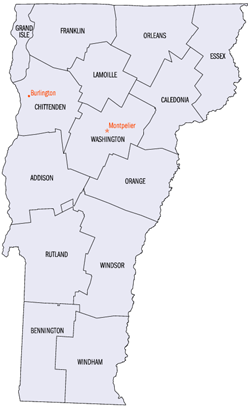
The New Hampshire Grants or Benning Wentworth Grants were land grants made between 1749 and 1764 by the colonial governor of the Province of New Hampshire, Benning Wentworth. The land grants, totaling about 135, were made on land claimed by New Hampshire west of the Connecticut River, territory that was also claimed by the Province of New York. The resulting dispute led to the eventual establishment of the Vermont Republic, which later became the U.S. state of Vermont.

Lieutenant Colonel Robert Rogers was an American colonial frontiersman. Rogers served in the British Army during both the French and Indian War and the American Revolutionary War. During the French and Indian War, Rogers raised and commanded the famous Rogers' Rangers, trained for raiding and close combat behind enemy lines.

Rogers' Rangers was a company of soldiers from the Province of New Hampshire raised by Major Robert Rogers and attached to the British Army during the Seven Years' War. The unit was quickly adopted into the British army as an independent ranger company. Robert Rogers trained and commanded the rapidly deployed light infantry force, which was tasked mainly with reconnaissance as well as conducting special operations against distant targets. Their tactics were built on earlier colonial precedents and were codified for the first time by Rogers as his 28 "Rules of Ranging". The tactics proved remarkably effective, so much so that the initial company was expanded into a ranging corps of more than a dozen companies. The ranger corps became the chief scouting arm of British Crown forces by the late 1750s. The British forces in America valued Rogers' Rangers for their ability to gather intelligence about the enemy. They were disbanded in 1761.

The Great North Woods Region, also known as the North Country, is located at the northern tip of New Hampshire, United States, north of the White Mountains Region and is part of the larger Great North Woods. The Great North Woods is a tourism region of New Hampshire and is located in Coos County. The dividing line is loosely defined as running from Cushman, a hamlet within Dalton, to south of Berlin and east to the Maine border, roughly following US Route 2.
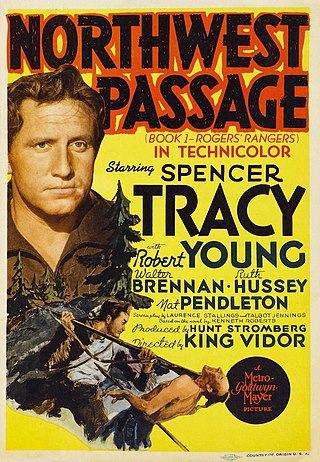
Northwest Passage, also billed as Northwest Passage , is a 1940 American Western film in Technicolor, directed by King Vidor. It stars Spencer Tracy, Robert Young, Walter Brennan and Ruth Hussey. The film is set in 1759, and tells a partly fictionalized version of the real-life St. Francis Raid by Rogers' Rangers, led by Robert Rogers on the primarily Abenaki village of St. Francis, in modern-day Canada. The screenplay, by Laurence Stallings and Talbot Jennings, is based on the 1937 historical novel Northwest Passage by Kenneth Roberts.
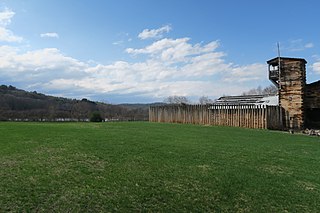
The Fort at Number 4 was a mid-18th century stockade fortification protecting Plantation Number 4, the northernmost British settlement along the Connecticut River in the Province of New Hampshire until after the French and Indian War. It was located in the present-day town of Charlestown, New Hampshire. A recreation of the fort, dating to 1960, now functions as an open-air museum, and was added to the New Hampshire State Register of Historic Places in July 2020.

The Upper Ammonoosuc River is a tributary of the Connecticut River that flows through Coös County in the northern part of the northeastern U.S. state of New Hampshire. Despite its name, the river is not an upstream portion of the Ammonoosuc River, but instead a separate tributary of the Connecticut River flowing from 20 to 60 miles north of the Ammonoosuc.

Joseph Blanchard (1704–1758) was born in Dunstable, New Hampshire on February 11, 1704 to Capt. Joseph Blanchard and his wife Abiah Hassell. In 1724 he joined the New Hampshire Militia as a lieutenant and served in Capt. Eleazer Tyng's Company. On September 26, 1728 he married Rebecca Hubbard of Groton, Massachusetts. They would have 12 children, including Jonathan Blanchard, a New Hampshire delegate to the Congress of the Confederation in 1784.
The New Hampshire Provincial Regiment was a provincial military regiment made up of men from the New Hampshire Militia during the French and Indian War for service with the British Army in North America. It was first formed in 1754 with the start of hostilities with France.
Coos, New Hampshire refers to the frontier area of northern New Hampshire. During the American Revolution a military command was located at Haverhill, New Hampshire to protect the New Hampshire Grants and to support military efforts in the invasion of Canada.

Provincial troops were military units raised by colonial governors and legislatures in British North America for extended operations during the French and Indian Wars. The provincial troops differed from the militia, in that they were a full-time military organization conducting extended operations. They differed from the regular British Army in that they were recruited only for one campaign season at the time. These forces were often recruited through a quota system applied to the militia. Officers were appointed by the provincial governments. During the eighteenth century militia service was increasingly seen as a prerogative of the social and economic well-established, while provincial troops came to be recruited from different and less deep-rooted members of the community.
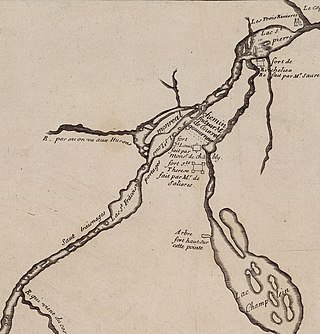
The Sainte-Thérèse Raid was a military raid on the town of Sainte-Thérèse in French Canada conducted by British elite forces known as Rogers' Rangers that took place during the French and Indian War from 3 to 18 June 1760. Led by Robert Rogers the raid was a pre-emptive strike ordered by Major General Jeffery Amherst as a prelude to his three pronged attack on Montreal the following month.
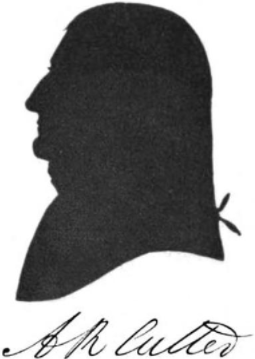
Ammi Ruhamah Cutter was an American physician. He served as a surgeon during the French and Indian War of 1754–1763, and was also the Physician General of the medical department of the Continental Army during the American Revolutionary War of 1775–1783.
















